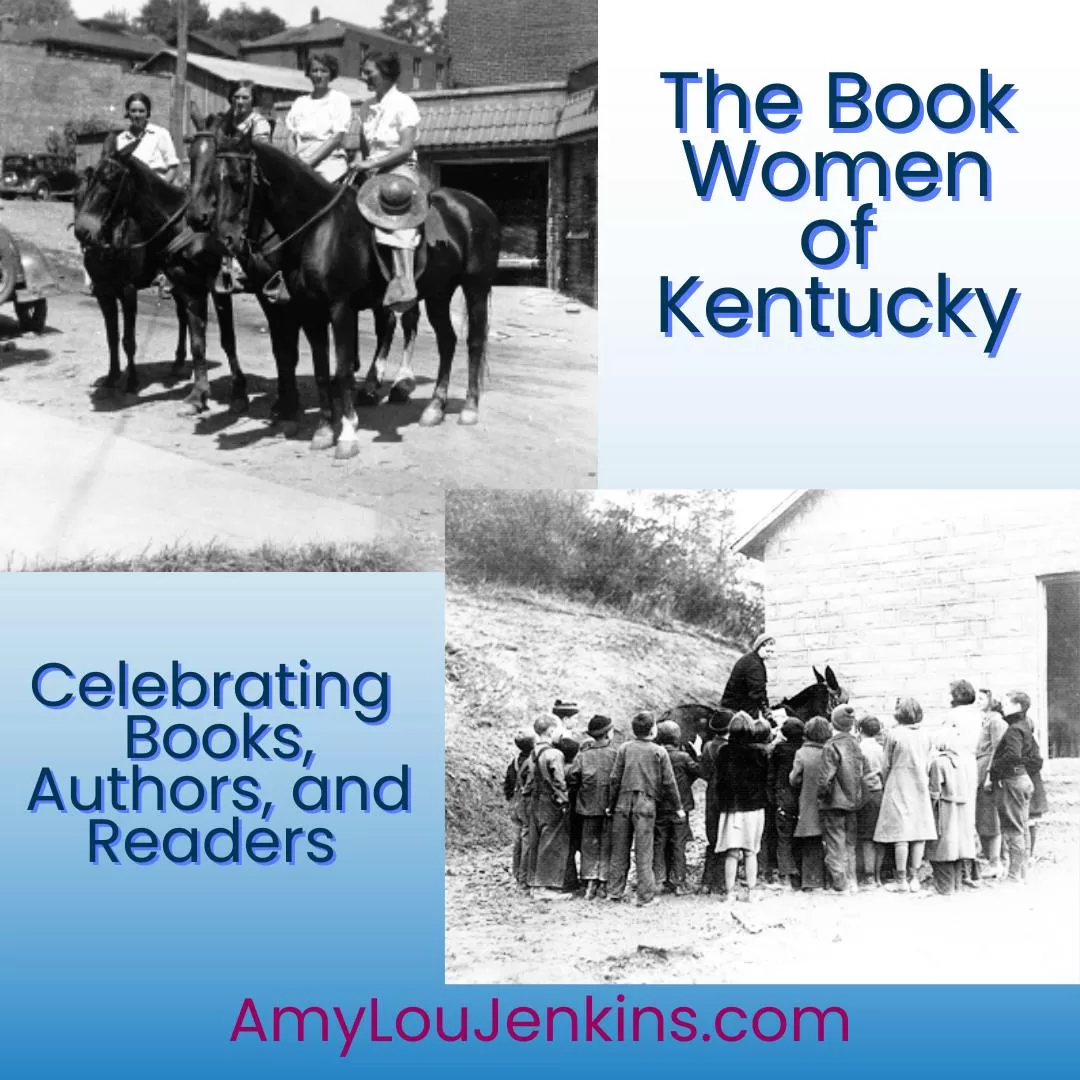
Let's Celebrate the Packhorse Librarians also Known as The Book Women
The Book Women of Kentucky: Igniting Minds During the Great Depression
Set against the bleak days of the Great Depression, an inspiring chapter of American history sprang from the rugged hills and hollers of Eastern Kentucky. Women who were part of the Works Progress Administration (WPA) established a remarkable initiative known as the Pack Horse Library Project, better known as the Book Women of Kentucky. These pioneers used the power of literature to combat the mental despair that echoed through the Appalachian Mountains. Poverty, isolation, illiteracy, and a virtual collapse of the economy bore down hard during one of the most challenging times in American history. A group women and men understood the transformative power of books.
Did You Know?
The bestselling historical fiction novel The Book Woman of Troublesome Creek: A Novel by Kim Michele Richardson was inspired by the Book Women of Kentucky. The novel follows a packhorse librarian and her quest to bring books to the Appalachian community she loves.
The Birth of the Pack Horse Library Project
Initiated in 1935, the Pack Horse Library Project was a component of President Franklin D. Roosevelt's New Deal, aimed at providing employment while enhancing public welfare. The idea was to deliver books, magazines, and other reading materials to underserved, remote Appalachian communities where education and reading resources were scarce.
Eastern, rural Kentucky, characterized by its geographical isolation, Before the Pack Horse Library Project, many Appalachian residents lacked access to books. Illiteracy was rampant, with about 31 percent of the population unable to read. Books have power. Residents yearned for literacy, seeing it as a vital escape from poverty. Although the Kentucky Federation of Women's Clubs established traveling libraries in 1896, poor infrastructure and sparse populations hindered their success. These libraries ceased operations in 1933, leaving 63 Kentucky counties without any library services.
The Pack Horse Library concept had an initial but short-lived debut. The first Pack Horse Library emerged in Paintsville in 1913 after May F. Stafford secured financial support from coal baron John C.C. Mayo. Unfortunately, Mayo's death in 1914 led to the program's end due to funding loss. It was a tough break. Elizabeth Fullerton, involved in women's and professional projects with the Works Progress Administration (WPA), recognized the potential of Stafford's idea and aimed to revive it. She had a vision.
The Book Women of Kentucky Combines Private and Public Assets
In 1934, an opportunity arose when a Presbyterian minister running a community center in Leslie County offered his library collection to the WPA. The condition was simple: Find funding for people to deliver these books to difficult-to-reach areas. This marked the beginning of the Pack Horse Library under the Federal Emergency Relief Administration (FERA). The WPA took over the project in 1935. This was a significant shift. By 1936, eight pack horse libraries were operational, delivering books across the rugged terrains of Eastern Kentucky. Parent Teacher Associations and other charities raised funds for additional books.
Women On Horseback
Most of the Pack Horse Librarians were women, many of whom were local to these mountains, understanding the terrain and the cultural nuances. These dedicated librarians would travel by horseback or mule-back across rugged landscapes, facing difficult weather conditions and physical challenges. Their determination wasn't merely to deliver books; they carried hope, knowledge, and an escape from the bleak realities of the Depression. The routes they undertook could be more than a hundred miles weekly, navigating remote paths where roads were non-existent.
Literary Medicine for a Nation in Despair
The selection of books and reading materials was diverse, catering to educational, recreational, and practical needs. Popular novels and classical literature provided an escape into other worlds, while medical texts and agricultural bulletins offered invaluable practical knowledge. Children's books were cherished for both their educational benefits and their ability to bring joy and imagination into young lives. Craft books, recipe books, and even magazines were requested frequently, imparting skills and new ideas that could improve daily living.
Titles frequently circulated included Mark Twain’s "The Adventures of Tom Sawyer," Margaret Mitchell’s "Gone with the Wind," Charles Dickens’s "A Tale of Two Cities," and a variety of folk tales and local histories that resonated deeply with the mountain people. The librarians also often read aloud to families, ensuring that even those unable to read themselves could experience the joy and comfort of literature.
Impact and Outreach of the Book Women of Kentucky
The Pack Horse Library Project operated from 1935 until 1943, the WPA funding ended. Over those eight years, the program expanded, with participation from as many as 30 counties in Kentucky at its peak. In the 1950’s Bookmobiles from the library system began to again bring books to those remote Kentucky communities.
The impact of the Pack Horse Librarians was profound. Illiteracy rates dropped as access to books improved. Children and adults alike discovered new worlds through the pages of their borrowed books, finding inspiration and hope. Communities began to value education and literacy more highly, a shift that would have lasting effects long beyond the Depression.
The legacy of the Pack Horse Librarians of Kentucky endures as a testament to the transformative power of books and the indomitable spirit of the women who delivered them. They not only provided a lifeline during one of America’s most difficult periods but also kindled a love for reading and learning that benefited generations to come.











